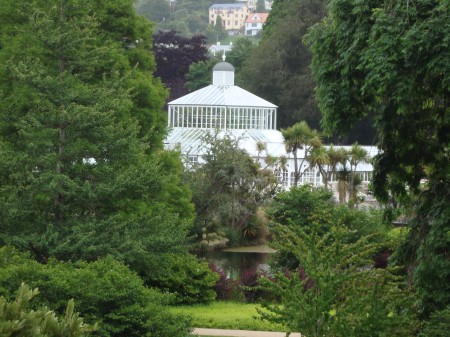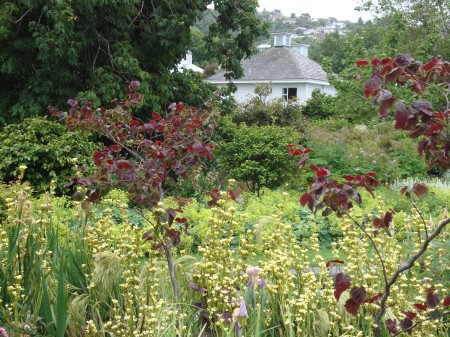How Art Can Heal Society
Art and architecture, gardens and music, all have the capacity to draw out the best in us. Our surroundings are very important, and we should all improve and beautify our immediate environments as much as possible.
The social value of art has been recognized since ancient times. Many Renaissance artists and architects wrote about the value of art and architecture in helping to create a harmonious society. The 19th century architect and designer, A.A. Putin, wrote much about the importance of art and architecture and in improving society.
Rudolph Steiner, the early 20th century Austrian psychic and educator, believed that bringing emphasis to the creative aspects of a child’s learning can result in a more balanced, thoughtful, and caring child. Negative social behaviour in schools can be transformed through art, and learning outcomes can be advanced through teaching art in schools.
BBC News Report 4 AM 27th March, 2013, New Zealand time tells of social transformation in a school where a radical new art programme has been implemented.
Orchard Gardens is a Boston public school for children aged from kindergarten to year 8. The school is situated in Roxbury, Massachusetts, USA. It has been a violent and troubled school for many years, with a very low academic achievement over-all.
Many of the children are disadvantaged economically, and come from a disparate mix of cultures: 56% Hispanic, 42% Black, 2% Asian has made the social environment difficult. These young children have been in the habit of carrying weapons, and so security guards were employed in an effort to check violence and other antisocial behaviour.
New Art Programme For Orchard Gardens Pilot School: Then, in 2010, along came new headmaster Andrew Bott to the Orchard Gardens Pilot School, who immediately fired the security guards. I imagine that getting rid of the security guards alone would have made a difference in the children’s behaviour. Watchful security policemen would not have inspired a feeling of trust and amiability amongst the pupils, and possibly might have made a bad situation worse as far as the violence went.
But, as well as creating a happier space for the children with the security guards gone, Andrew Bott had a dream of healing the atmosphere by inspiring the pupils through art. Using the money saved from paying security guards, he began to establish an extensive art programme for the school.
This new art programme, in just three years, has helped to turn around the outcomes. Peace now reigns at Orchard Gardens School, and the children are much happier. Academic achievement has risen dramatically. Students who were once ‘wasters’ with no hope for the future, now do their best to keep out of trouble and expend their energy on achieving good things.
The headmaster, Andrew Bott, walked us through onto the third level of the school building, pointing out that although there were 900 pupils studying in the school-rooms right at that moment, all was perfectly quiet.
The children now look forward to life, and their expectations for their futures have grown.
Art has changed their lives.
As well as implementing this great art programme to encourage a feeling of self-worth through creativity, which also helps learning outcomes, the learning hours were also extended to improve the academic level.
Rudolph Steiner wrote much on the value of art in education. Art, music and dance, he said, developed the soul. Of course, this is not a new idea: Renaissance artists, and probably many before, have written about the spiritual aspect of art and architecture. Good architecture, especially if it incorporates gardens into its scheme, helps promote a good and comfortable and happy society, so many architects and philosophers have written. So it makes sense, in order to create well-rounded, happy, constructive children, for them to spend a good proportion of their learning time in making art and things of beauty.
Living and working in a beautiful environment will also enhance learning outcomes. Connecting with nature and enjoying beautiful architecture soothes the soul and develops spiritual and creative qualities, which. in turn, will be conducive to learning.
 Glass Houses at Dunedin Botanic Gardens 2012. Photo by Merrilyn on Holly’s camera.
Glass Houses at Dunedin Botanic Gardens 2012. Photo by Merrilyn on Holly’s camera.
Steiner schools have a great emphasis on art, with children using colour, first with crayons, then with paint, as part of their daily routine. Steiner schools do not teach the intellectual side of education until the child is seven years old. They do not have formal lessons in reading before that time, but are read to instead. The idea is that you must not force the intellect in learning ‘stuff’ until that intellect is sufficiently developed to be able to tackle these ideas comfortably. Until the age of seven, the education is entirely made up of making things, making art, singing, dancing, being read to, and learning through play. By promoting the creative process through art, music and play, the spiritual qualities in the child are given nourishment, and this encourages harmony within. Social skills are also very much enhanced by art and by play.
There is no need to worry about the intellectual pursuits before the age of seven: If the right measures are taken using art and music, and a rich and happy learning environment is provided, then the child will most likely be well adapted and well developed by the age of seven, so that learning the academic things becomes easy. Reading, writing and doing mathematics pose no hurdle to the child who has been fortunate enough to have had this kind of artistic early education.
Other posts which may be of interest:
http://merrilynhope.com/sexism-ageism-racism-and-no-jobs-in-new-zealand-june-2013/
 A revised edition of Merrilyn’s 1980’s Health Book entitled: NO CANCER NOTEBOOK is available for purchase.
A revised edition of Merrilyn’s 1980’s Health Book entitled: NO CANCER NOTEBOOK is available for purchase.
The cost is $60 New Zealand currency. This includes postage.
Send an email to [email protected] to order.

